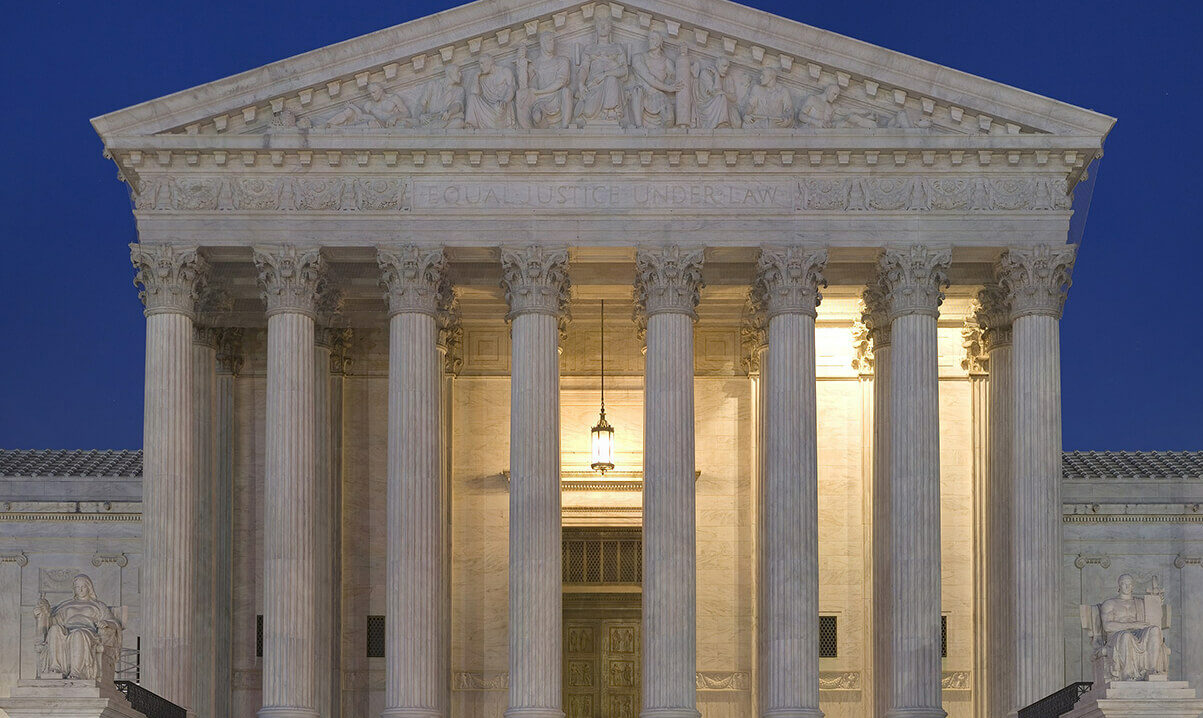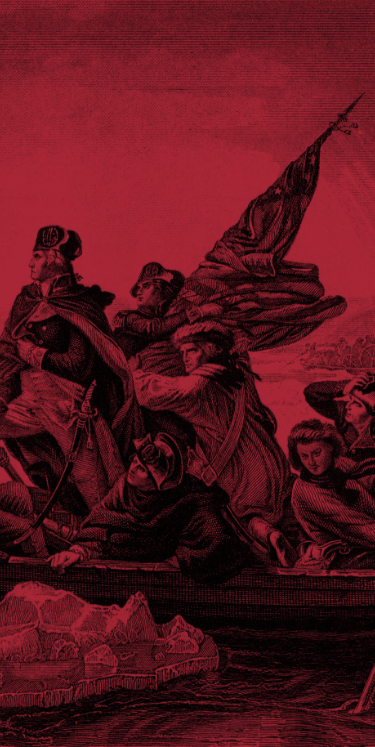The Call for Change
Although groups like the League of Women Voters have long supported the abolition of the electoral college,1 the protracted proceedings in Florida as well as the apparent disparity between the popular and the electoral college vote have further fueled calls to abolish the electoral college. Critics urge a replacement of the electoral college with a straightforward nationwide popular vote system; and if needed, a national run-off between the top two candidates so that the winner will always receive an absolute majority of the popular vote.2 An advocate of this plan, the Center for Voting and Democracy, explains:
[I]t’s time once again to consider replacing the electoral college with direct election. To assure a real majority winner, a much better solution than a simple plurality vote or keeping the electoral college would be to adopt instant runoff voting, a majority vote system.3
Another advocate for the abolition of the electoral college, Citizens for True Democracy, asserts:
- The electoral college is outdated and anti-democratic. America deserves truly representative presidential elections, in which all votes have equivalent values. A constitutional amendment replacing the electoral college with a simple popular vote would be most effective.4
- The electoral college is a disastrous institution. It. . . . is unfair, inaccurate, and unaccountable. Its abolition is the only path to a true American democracy.5
Others have joined this call,6 and, in sympathy with their view, Senator Hillary Clinton has promised to introduce in the Senate a constitutional amendment to abolish the electoral college — a movement already supported by Democrat Senator Dick Durbin and Republican Senators John Warner and Arlen Spector — and an action parallel to that already undertaken in the House of Representatives by Republicans Ray Lahood and Jim Leach and Democrats Robert Wise, Dick Gephardt, Rick Boucher, Virgil Goode, and Robert Underwood. Such an amendment would eliminate several extensive parts of the Constitution, including Article II, Section 1, ¶ 2, 4, and portions of the 12th, the 20th, and the 23rd Amendments.
The current rhetoric calling for an end to the electoral college frequently reveals a misunderstanding of the purpose of the college as well as the safeguards it provides and the interests it protects. Therefore, a brief review of the college is appropriate before any informed discussion about its abolition should proceed.
The Constitutional Basis for the Electoral College
The provisions originally established in the Constitution regarding the electoral college have been substantially altered three times in accordance with the provisions laid out in Article V of the Constitution providing for its own amendment. The first was in 1804 with the 12th Amendment, the second was in 1933 with the 20th Amendment, and the third was in 1961 with the 23th Amendment. Therefore, the current constitutional provisions on the electoral college stipulate:
Each State shall appoint, in such manner as the Legislature thereof may direct, a number of electors equal to the whole number of Senators and Representatives to which the State may be entitled in the Congress: but no Senator or Representative or person holding an office of trust or profit under the United States shall be appointed an elector. Article ii, Section 1, ¶ 2
The Congress may determine the time of choosing the electors and the day on which they shall give their votes; which day shall be the same throughout the United States. Article ii, Section 1, ¶ 4
The electors shall meet in their respective States and vote by ballot for President and Vice-President, one of whom, at least, shall not be an inhabitant of the same State with themselves; they shall name in their ballots the person voted for as President and in distinct ballots the person voted for a Vice-President, and they shall make distinct lists of all persons voted for as President and of all persons voted for as Vice-President and of the number of votes for each, which lists they shall sign and certify and transmit sealed to the seat of the government of the United States, directed to the President of the Senate; — The President of the Senate shall, in the presence of the Senate and House of Representatives, open all the certificates and the votes shall then be counted; — The person having the greatest number of votes for President shall be the President, if such number be a majority of the whole number of electors appointed; and if no person have such majority, then from the persons having the highest numbers not exceeding three on the list of those voted for as President, the House of Representatives shall choose immediately, by ballot, the President. But in choosing the President, the votes shall be taken by States, the representation from each State having one vote; a quorum for this purpose shall consist of a member or members from two-thirds of the States, and a majority of all the States shall be necessary to a choice. . . . [The section here deleted was superceded by provisions of the 20th Amendment]. . . . The person having the greatest number of votes as Vice-President shall be the Vice-President, if no such number be a majority of the whole number of electors appointed, and if no person have a majority, then from the two highest numbers on the list, the Senate shall choose the Vice-President; a quorum for the purpose shall consist of two-thirds of the whole number of Senators, and a majority of the whole number shall be necessary to a choice. But no person constitutionally ineligible to the office of President shall be eligible to that of Vice-President of the United States. Constitution, Amendment xii
If a President shall not have been chosen before the time fixed for the beginning of his term, or if the President-elect shall have failed to qualify, then the Vice-President-elect shall act as President until a President shall have qualified; and the Congress may by law provide for the case wherein neither a President-elect not a Vice-President-elect shall have qualified, declaring who shall then act as President, or the manner in which one who is to act shall be selected, and such person shall act according until a President or Vice-President shall have qualified. Constitution, Amendment xx
The District constituting the seat of government of the United States [Washington, D. C.] shall appoint in such manner as the Congress may direct: a number of electors of President and Vice-President equal to the whole number of Senators and Representatives in Congress to which the District would be entitled if it were a State, but in no event more than the least populous State; they shall be in addition to those appointed by the States, but they shall be considered, for the purposes of the election of President and Vice-President, to be electors appointed by a State; and they shall meet in the District and perform such duties as provided by the twelfth article of amendment. Constitution, Amendment xxiii
The Current Electoral College Procedure
With Article II directing that the number of electors correspond exactly with the numbers in the Congress (100 electors representing the Senate and 435 additional electors representing the House), and with the 23rd Amendment directing that the District of Columbia shall receive the same number of electors as the least populous State (3 electors), there are therefore a total of 538 presidential electors. These electors are distributed among the States according to the total number of U. S. Senators and U. S. Representatives in each State (e.g., California has 54 electors, Texas 32, Iowa 7, Wisconsin 11, etc.). A candidate for president must obtain an absolute majority of the electoral votes — 270 — in order to attain the presidency.
The popular vote in each State directs the electors of that State how to cast their vote for President. In most States, whichever candidate wins the popular vote in that State wins all of that State’s electors; but since the manner of choosing a State’s electors is left by the Constitution to each State, different States, not surprisingly, have different rules. For example, in Maine and Nebraska, the winner does not take all; rather, the candidate who wins the popular vote in each congressional district wins the electoral vote from that congressional district, and the candidate who wins the entire State receives the State’s two remaining electoral votes.
The presidential electors are usually selected in each State at the same time that each political party in that State determines its presidential candidate. That is, when a State party selects its presidential nominee it also designates a slate of electors. These electors, along with the party’s nominees for president and vice-president, are submitted to the chief election official in the State. Thus, in each State there is a slate of Republican electors, Democrat electors, Green Party electors, Reform Party electors, etc., and the candidate that wins the popular vote in that State will have the electors from his or her own political party cast the electoral votes for that State. As constitutional scholar William Rawle explained in his classic 1825 commentaries on the Constitution:
[T]he electors do not assemble in their several States for a free exercise of their own judgments, but for the purpose of electing the particular candidate who happens to be preferred by the predominant political party which has chosen those electors.7
Since the Constitution directs that Congress shall set the time that the electors shall meet to cast their votes, federal law currently stipulates that electors assemble following the presidential election on the first Monday after the second Wednesday in December. On that day, the electors for each State gather in their respective State capitols and each elector marks a ballot indicating his choice for president and his choice for vice-president. These ballots are certified by State authorities and are then transmitted to the President of the U. S. Senate (the Vice-President of the United States), who will open and tabulate the ballots before a joint session of Congress.
If a presidential candidate receives an absolute majority of electoral votes, that candidate becomes the President and will be sworn into office on noon, January 20th. If no candidate receives an absolute majority, as happened in the 1824 election when the electoral votes were split among four candidates, or if there should be a tie (if, for example, two candidates each received 269 votes), then the House of Representatives chooses the President from among the top three contenders, with each State being allotted only one vote on behalf of its State, regardless of the size of its congressional delegation. The Senate chooses the Vice-President in a similar manner.
What Led to the Formation of the Electoral College?
During the Constitutional Convention, three proposals were originally discussed by the framers on how the president could be elected. Interestingly, those three proposals were rejected. †
The first proposal was to allow Congress to select the president. This idea was rejected for three reasons: (1) rancorous partisanship would be encouraged in the Congress and the hard feelings residual for the losers of the contest would make any legislative progress following the election unlikely; (2) with Congress being such a relatively small body, and with it being assembled in one geographic location, the potential for foreign governments to affect the outcome of the election through bribery and corruption would be increased; and (3) if Congress selected the President, it would be virtually impossibility for the Executive branch to maintain its independence from the Legislative branch.
The second proposal was to allow the State legislatures to select the president. This idea was rejected for fear that the president might become so indebted to the States that he would permit the erosion of federal authority and thus undermine the federal republic.
The third proposal was that the president be elected by national popular vote. This idea was rejected not because the framers distrusted the people but rather because the larger populous States would have much greater influence than the smaller States and therefore the interests of those smaller States could be disregarded or trampled. Additionally, a nationwide election would encourage regionalism since the more populous areas of the country could form coalitions to elect president after president from their own region. With such regional preferentialism, lasting national unity would be nearly impossible.
The framers, dissatisfied with these three initial proposals, referred the issue of the selection of a president to the “Committee of Eleven” for further investigation. That Committee subsequently proposed an indirect election of the president on a State by State basis through a college of electors, a practice which had proved successful in ancient nations.
Why Was The Electoral College Method Chosen?
The electoral college synthesized two important philosophies established in the Constitution: (1) the maintenance of a republican, as opposed to a democratic, form of government (the explicit constitutional provisions on this issue, as well as the specific declarations of the Founders, will be examined later in this paper); and (2) the balancing of power between the smaller and the larger States and between the various diverse regions of the nation (this second point will be examined first).
When establishing our federal government, smaller States like Rhode Island had feared they would have no voice, and therefore no protection, against the more populous States like New York or Massachusetts. Similarly, the sparsely populated agricultural regions feared an inability to protect their interests against the fishing and shipping industries dominant in the more populous coastal States. These concerns on how to preserve individual State voices and diverse regional interests caused the framers to establish a bi-cameral rather than a uni-cameral legislative system.
In that wise plan, one body preserved the will of the majority as determined by population and the other preserved the will of the majority as determined by the States. As Constitution signer James Madison confirmed:
The Constitution is nicely balanced with the federative and popular principles; the Senate are the guardians of the former, and the House of Representatives of the latter; and any attempts to destroy this balance, under whatever specious names or pretences they may be presented, should be watched with a jealous eye.8
Consequently, in the Senate, Delaware has the same power as California with each State having two votes; but in the House, Delaware’s single vote often is completely negated by the fifty-two from California. Because of this different source of strength in each body, the votes in those two bodies on the same piece of legislation may be dramatically different. In such a case, before that legislation may become law there must be some compromise — some yielding of the Senate to the will of the population and some yielding of the House to the will of the States. As James Madison explained, the electoral college wisely synthesized both of these important interests:
As to the eventual voting by States, it has my approbation. The lesser States and some larger States will be generally pleased by that mode. The deputies from the small States argued, and there is some force in their reasoning, that, when the people voted, the large States evidently had the advantage over the rest, and, without varying the mode, the interests of the little States might be neglected or sacrificed. Here is a compromise.9
James Hillhouse (a soldier during the American Revolution and a U. S. Representative and Senator under Presidents George Washington, John Adams, Thomas Jefferson, and James Madison) also affirmed this principle, explaining:
The principle of the Constitution, of election by electors, is certainly preferable to all others. . . . [because] Pennsylvania, Virginia, Massachusetts, and New York, may combine; they may say to the other [smaller] States, we will not vote for your man. . . . [or] the agricultural will be arrayed against the mercantile; the South against the East; the seaboard against the inland. 10
Consequently, under the electoral college system, the smaller States receive a slightly greater voice, proportionally speaking. For example, California is the largest State and its 33 million inhabitants have 54 electors, each of whom represents 614,000 inhabitants. However, Wyoming is the smallest State and its less than one-half million inhabitants are represented by only 3 electors — one for every 160,000 inhabitants. This therefore gives Wyoming slightly more proportional strength. As Uriah Tracy (a Major-General during the Revolution and a U. S. Representative and Senator under Presidents George Washington, John Adams, and Thomas Jefferson) observed during debates on the electoral college:
He [the president] is to be chosen by electors appointed as the State legislatures shall direct, not according to numbers entirely, but adding two electors in each State as representatives of State sovereignty. Thus, Delaware obtains three votes for president, whereas she could have but one in right of numbers [population].11
So, on the one hand, the electoral college tends somewhat to overrepresent voters in smaller States; and no matter how small a State is, it is guaranteed at least 3 electors because, as explained by James Bayard (a U. S. Representative and U. S. Senator under Presidents John Adams, Thomas Jefferson, and James Madison), the electoral college supplied a “means of self protection” to “a small State without resources.” 12 In fact, the combined number of electors in the eight smallest States (Alaska, Delaware, North Dakota, South Dakota, Vermont, Wyoming, Montana, and Rhode Island) produce the same number of electors as the single State of Florida even though Florida has a population more than three times greater than those eight smaller States combined.
Yet, on the other hand, if a candidate wins California and its 54 electoral votes, then that candidate is one-fifth of the way to the 270 electoral votes needed to capture the presidency. Thus, while California accounts for only 11 percent of the nation’s population it can provide 20 percent of the electoral votes needed to obtain the presidency. The electoral college system therefore preserves a sound balance between population centers and between diverse State and regional interests, incorporating elements both of popular and of State representation in its operation.
Consider how this duality was demonstrated in the recent presidential election. If the national tally of the popular vote is transferred proportionally into a vote by the House of Representatives, the results would have been 210 Members voting for Gore, 209 for Bush, and 16 Members voting for others; Gore, therefore, would have narrowly won a vote in the House based on the will of the population. However, if the State by State votes are transferred to the Senate, since Bush won 30 States and Gore 20, the Senate vote would have been 60 for Bush and 40 for Gore; Bush, therefore, by a large margin, would have been the choice of the States. In short, Gore narrowly won the popular vote by winning heavily populated and narrowly concentrated urban parts of the nation (Gore carried only 676 counties, located primarily along both coasts and along the Mississippi River) while Bush was the overwhelming choice of the States and of the more geographically diverse regions of the country (Bush carried 2436 counties — nearly four times that of Gore — spreading virtually from coast to coast). The electoral college wisely weighs these competing interests in the selection for a President. In fact, John Taylor (an officer during the American Revolution and a U. S. Senator under Presidents George Washington and Thomas Jefferson) observed:
Two principles sustain our Constitution: one a majority of the people, the other a majority of the States; the first was necessary to preserve the liberty or sovereignty of the people; the last, to preserve the liberty or sovereignty of the States. But both are founded in the principle of majority; and the effort of the Constitution is to preserve this principle in relation both to the people and the States, so that neither species of sovereignty or independence should be able to destroy the other.13
James Madison agreed, affirming:
In our complex system of polity, the public will, as a source of authority, may be the will of the people as composing one nation, or the will of the States in their distinct and independent capacities; or the federal will as viewed, for example, through the presidential electors, representing in a certain proportion both the nation and the States.14
This blending of the will of the population and the will of the States is why it is possible — and has thrice occurred — that a President may win the popular vote but lose the electoral vote (on those previous occasions, the margin of victory in the popular vote was less than 1 percent). Usually, however, the electoral college tends to exaggerate the margin of victory of the popular vote rather than run counter to it.
The Benefits of the Electoral College System
There are three important benefits produced by the current electoral college system:
- Because a candidate must win at least 270 electoral votes from across the nation, a candidate cannot become president without a significant widespread voter base. In fact, as has happened in three previous elections, the distribution of voter support may actually take precedence over the quantity of voter support. Therefore, the electoral college ensures a broad national consensus for a candidate that subsequently will allow him to govern once he takes office.
- Since the electoral college operates on a State-by-State basis, this not only enhances the status of minorities by affording them a greater proportional influence within a smaller block of voters at the State level but it also ensures a geographically diverse population which makes regional domination, or domination of urban over suburban or rural areas, virtually impossible. In fact, since no one region of the country has 270 electoral votes, there is an incentive for a candidate to form coalitions of States and regions rather than to accentuate regional differences.
- The electoral college system prioritizes the most important factors in selecting a president. If a candidate receives a substantial majority of the popular vote, then that candidate is almost certain to receive enough electoral votes to be president. However, if the popular vote is extremely close, then the candidate with the best distribution of popular votes will be elected. And if the country is so divided that no one candidate obtains an absolute majority of electoral votes, then the U. S. House of Representatives — the body closest to the people and which must face them in every election — will then choose the president.
Objections to the Electoral College System
A New System Would Prevent Recounts Like That Which Occurred in Florida
While pundits and opponents of the electoral college system assert that the prolonged recount in Florida would have been avoided if there had been a direct popular election of the president, the reality is that without the electoral college system, recounts likely would have increased.
Consider: the two major candidates were separated by a popular margin of less than one percent. Therefore, if a candidate needed to pick up an additional one percent in a national recount, there is no reason to confine the recount solely to the closely contested States; in fact, it would make sense to recount even the landslide States. Therefore, if Bush needed only 100,000 votes to take the popular lead, he could demand a recount in New York, Michigan, Pennsylvania, Washington, D. C., Massachusetts, etc. — States he lost by wide margins — not because he needed to win those States but because he might gain more votes to add to his national total. In fact, he could even demand a recount of the States that he won handily — States like Texas, Georgia, Virginia, Alabama, etc. — simply to accumulate additional voters.
Contrary, then, to what many currently assert, without the electoral college system, in a close election the possibility of recounts — and of recounts in numbers of States — would likely increase rather than decrease.
Abolishing the Current System Will Give the People a Better Voice and Better Representation
Various groups, claiming that the “electoral college system is fundamentally unfair to voters,” 15 urge “the abolition of the electoral college so that people’s votes count.” 16 They argue that “because many State constitutions award electoral votes on a winner-take-all basis, all individual votes become meaningless: each State gets a certain number of electoral votes; but for the Presidential election itself, individual votes are not even tallied.” 17
Interestingly, because of the electoral college, the opposite has been true. As the Florida situation has proved, individual votes are tallied — sometimes several times. Furthermore, without the electoral college, candidates would spend less time trying to win the votes of many individuals. As Curtis Gans, from the Committee for the Study of the American Electorate, points out:
The idea of getting rid of the electoral college . . . would be profoundly dangerous, particularly in the present way that we conduct our campaigns. Essentially what this would mean is that the totality of our campaigns would be a television advertising, tarmac kind of campaign. You would be handing the American presidential campaign to whatever media adviser could outslick the other. Different States in different regions have important interests to which the candidate should be subjected and to which the candidates should be required to speak. . . . [D]irect elections would insure that all monetary resources would be poured into [televised political] advertising. There would be virtually no incentive to try to mobilize constituencies, organize specific interests, or devote any resources to such things as voter registration and education. . . . What we would have is a political system that combines the worst of network television with the worst of the modern campaign.18
Indeed, without the electoral college system, candidates would logically spend their campaign courting voters in the most populous urban areas such as Chicago, San Francisco, New York City, Washington, D. C., Miami, Seattle, etc., rather than visiting cities in more rural areas — cities like Wichita, Birmingham, Amarillo, Cheyenne, Springfield, Tulsa, etc. Additionally, since larger urban areas tend to be more liberal than the rest of the nation, presidential campaigns would therefore cater predominately to liberal interests.
Under the electoral college system, it is possible that a candidate can win the presidency by carrying a majority of only the 11 most densely populated States (California, Texas, Florida, New York, Ohio, Pennsylvania, Illinois, Michigan, New Jersey, North Carolina and either Georgia or Virginia). However, under a system of direct elections, this number could be reduced to even fewer States, particularly if they happened to be the largest States and could deliver overwhelming margins of victory, such as Washington, D. C., did for Gore by the lopsided 86 to 9 percent margin. In fact, the margin of victory in a State would become more important than simply winning the State and thus could easily cause a candidate not to visit a close State but rather to spend time in a State in which he is already popular, simply to drive up the margin of the vote and add more to his national total.
Therefore, contrary to what is asserted, the electoral college system ensures, rather than prevents, the counting of each individual’s vote and actually enhances the opportunity for the votes of many more individuals to be courted.
The Current System Does Not Allow Third Parties an Opportunity to Participate
Opponents of the electoral college complain that a third-party president can never be elected so long as the present system remains in effect.19 They argue that, because of the electoral college system . . .
. . . none of these [third] parties have ever seriously contended with Republicans or Democrats in Presidential elections. In fact . . . . [i]n 1992, a Reform Party candidate, Texas billionaire Ross Perot, won nearly 12% of the popular vote. But the percentage of votes that he won in “official” tallies? Zero. For despite his significant victories in the popular vote, he failed to win a majority of a State and thus was not awarded a single electoral vote.20 Without the confines of the electoral college, a candidate could win 12% in a Presidential election without winning the majority of a single State, and could, quite fairly, still be credited with winning 12% of the vote.21
What these groups apparently fail to recognize is that even if a third party candidate should get 25 percent, or even an impressive 40 percent of the popular vote, such a percentage is still insufficient to attain the presidency. It is true that if there was no electoral college, then a third party candidate who received 12 percent of the popular vote would no longer show that he received zero electors; but is this a sufficient reason to abolish the electoral college — just so a candidate can perhaps feel better about himself and his effort, and because a 12 rather than a zero could appear by his name? A 12 still will not elect him to office since even the opponents of the electoral college system propose that no president should be elected with under 50 percent.
Furthermore, those who promote the cause of third parties are typically unwilling to invest the effort that it takes to actually build a third party, for the entirety of American political history shows that third parties must be built from the bottom up and not from the top down. In fact, not even a national hero as popular as two-time President Teddy Roosevelt with his Bull Moose Party was able to capture lasting support, and Founding Father Attorney General William Wirt of the Anti-Masonic Party, even in the wake of the anti-Masonic fervor that swept the nation in the mid 1820s, failed to achieve enduring popular support.
If a third party ever intends to have any lasting influence or widespread national support, it must invest time and resources in a 30 year plan that begins to build at the local level. That is, it must begin by running candidates for local races such as school boards and city councils, and after demonstrating that it has support at the local level, it can then run candidates for State Representative and for State Senator. If the public continues to support its ideas at the State level, it should then run candidates for U. S. Representatives and U. S. Senators, and then finally for President. But until an infrastructure is established with wide popular support, it is virtually impossible for any third party to break in at the top. And even if a third party candidate such as Ralph Nader, Ross Perot or Pat Buchanan were elected as president, could he govern without his supporters serving in the U. S. Congress and in State Houses across the nation? Abolishing the electoral college will not remove the other political hurdles that third parties must overcome if they ever expect to compete.
The Current System Discourages Minority Participation
While critics assert that the electoral college discourages minority participation. Curtis Gans, of the Committee for the Study of the American Electorate, explains why this assertion is inaccurate:
The success of American democracy has rested, in part, on achieving a balance between the will and desires of the majority of Americans and recognizing the rights and needs of various minorities. The electoral college serves to protect the latter in national politics. To take the most obvious example, the number of farmers in the Unites States has dwindled so precipitously that nationally they are no longer a serious numerical factor in electoral outcomes—despite the fact that most of the food we have on our tables is due to their individual and collective effort. In a system of direct elections, their concerns could easily be ignored. But because their votes are critical to winning electoral votes in several mid-western and western States, their needs must be addressed, their views must be solicited, and their allegiances must be competed for. The needs and aspirations of America’s African-American population could easily be ignored in a direct election. They comprise perhaps 12 percent of the eligible electorate. But in several southern States, they account for nearly a majority of eligible citizens and they comprise a significant and, perhaps on occasions, pivotal minorities in several northern States. The electoral college insures, in national elections, that their views must be taken into account. Union members, Christian fundamentalists, Latinos, rural denizens are but a few of the significant minorities whose views and needs might be ignored if campaigns were totally nationalized. 22
William C. Kimberling of the FEC concurs, explaining:
[F]ar from diminishing minority interests by depressing voter participation, the electoral college actually enhances the status of minority groups. This is so because the votes of even small minorities in a State may make the difference between winning all of that State’s electoral votes or none of that State’s electoral votes. And since ethnic minority groups in the United States happen to concentrate in those States with the most electoral votes, they assume an importance to presidential candidates well out of proportion to their number. The same principle applies to other special interest groups such as labor unions, farmers, environmentalists, and so forth. It is because of this “leverage effect” that the presidency, as an institution, tends to be more sensitive to ethnic minority and other special interest groups than does the Congress as an institution. Changing to a direct election of the president would therefore actually damage minority interests since their votes would be overwhelmed by a national popular majority.23
The Current System Creates Constitutional Crises
Opponents claim that the electoral college is “a constitutional accident waiting to happen,” 24 and often charge that, in close elections, the electoral college “warps national politics and could lead to a major constitutional crisis.” 25 Interestingly, the Florida controversy did not create a constitutional crisis based on the electoral college; rather, it demonstrated three other problems: (1) the ease with which voter fraud may occur, (2) the current tendency to resort to the judiciary for a solution when one disagrees either with the law or the outcome, and (3) the proclivity of the courts to rewrite the intent of the legislature and the explicit wording of State laws to reflect their own preferences. None of these problems so apparent in Florida will be solved by the abolition of the electoral college.
The Current System is Anti-Democratic
The charge is made that the electoral college is “blatantly distrustful and alarmingly paternalistic towards the American populace, not to mention being flat-out undemocratic. The electoral college . . . at least in part, was aimed at preventing the general public from having any direct power in Presidential or Senatorial elections, for fear of the ‘uneducated masses’ having any direct political power.” 26
Did the framers not trust the masses? Contrary to what is charged, they did — completely. This fact is easily demonstrable not only through a simple perusal of their writings but also by even a cursory examination of the numerous provisions in both the federal and State constitutions by which the framers repeatedly placed immense power into the hands of citizens.
Is the electoral college anti-democratic? Absolutely — as is the rest of the Constitution. In fact, the Constitution is so anti-democratic that it contains explicit provisions forbidding America from becoming a democracy, requiring instead that she maintain herself as a republic. To move toward democracy would therefore require not only an abolition of the electoral college but also a rewriting of several key provisions of the Constitution.
While many today errantly believe that there is no difference between a democracy and a republic, the framers knew that there was; and they specifically rejected a democracy and deliberately chose a republic. Notice some of their clear declarations on this subject:
[D]emocracies have ever been spectacles of turbulence and contention; have ever been found incompatible with personal security or the rights of property; and have, in general, been as short in their lives as they have been violent in their deaths.27 James Madison
Remember, democracy never lasts long. It soon wastes, exhausts, and murders itself. There never was a democracy yet that did not commit suicide.28 John Adams
A democracy is a volcano which conceals the fiery materials of its own destruction. These will produce an eruption and carry desolation in their way.29 The known propensity of a democracy is to licentiousness [excessive license] which the ambitious call, and ignorant believe to be, liberty.30 Fisher Ames, a framer of the bill of rights
We have seen the tumults of democracy terminate . . . as [it has] everywhere terminated, in despotism. . . . Democracy! savage and wild. Thou who wouldst bring down the virtuous and wise to thy level of folly and guilt.31 Gouverneur Morris, signer and penman of the constitution
[T]he experience of all former ages had shown that of all human governments, democracy was the most unstable, fluctuating, and short-lived.32 John Quincy Adams
A simple democracy . . . is one of the greatest of evils. 33 Benjamin Rush, signer of the declaration
In democracy . . . there are commonly tumults and disorders. . . . Therefore a pure democracy is generally a very bad government. It is often the most tyrannical government on earth.34 Noah Webster, responsible for article i, section i, ¶ 8 of the constitution
Pure democracy cannot subsist long nor be carried far into the departments of state — it is very subject to caprice and the madness of popular rage.35 John Witherspoon, signer of the declaration
It may generally be remarked that the more a government resembles a pure democracy the more they abound with disorder and confusion.36 Zephaniah Swift, author of America’s first legal text
Samuel White (a military general and a U. S. Senator under President Thomas Jefferson) summarized the framers convictions about the superiority of a republic over a democracy when he declared:
The people watch their servants with a jealous eye. If they err at all, it is on . . . the safe side. . . . [W]hat we have most to fear to our government and our liberties must come . . . from the licentiousness of democracy. This is what republican governments have forever to guard against; this is the vortex in which they are most likely to be swallowed up. God grant it may never be the case with ours; I fear nothing else.37
So convinced were the framers of the superiority of a republic over a democracy that Article IV of the Constitution requires that every State maintain a republican — as opposed to a democratic — form of government. The electoral college helps maintains a federal, republican system of government, for in the American federal structure, important political powers are reserved to the States as well as to the people. As William C. Kimberling of the FEC’s Office of Election Administration argues:
Indeed, if we become obsessed with government by popular majority as the only consideration, should we not then abolish the Senate which represents States regardless of population? Should we not correct the minor distortions in the House (caused by districting and by guaranteeing each State at least one Representative) by changing it to a system of proportional representation? This would accomplish “government by popular majority” and guarantee the representation of minority parties, but it would also demolish our federal system of government. If there are reasons to maintain State representation in the Senate and House as they exist today, then surely these same reasons apply to the choice of president.38
The direct election of a president would be a major rejection of and departure from the federal, republican character of our American republic.
The Current System is the Cause of Low Voter Turnout
Citizens for True Democracy, one of the more vocal groups in calling for the abolition of the electoral college, explains that it “was founded in the wake of the 1996 presidential elections, which boasted record-breaking low voter turnout.” They assert that abolishing the electoral college will cause “people [to] vote.” 39 Other opponents similarly complain about the role of the electoral college “in depressing voter turnout” arguing that, “since each State is entitled to the same number of electoral votes regardless of its voter turnout, there is no incentive in the States to encourage voter participation. Indeed, there may even be an incentive to discourage participation.” 40 However, William C. Kimberling of the FEC correctly points out:
While this argument has a certain surface plausibility, it fails to account for the fact that presidential elections do not occur in a vacuum. States also conduct other elections (for U. S. Senators, U. S. Representatives, State Governors, State legislators, and a host of local officials) in which these same incentives and disincentives are likely to operate, if at all, with an even greater force. It is hard to imagine what counter-incentive would be created by eliminating the electoral college.41
In fact, not only is evidence completely lacking that the electoral college suppresses voter turnout, but, to the contrary, the voter turnout this year — under the electoral college system — was impressively high with, for example, States like California and Florida reaching 70 percent in voter turnout, and Maryland attaining 75 percent, etc. Would abolishing the electoral college magically have raised the participation in these States to 100 percent? Hardly. Furthermore, previous generations of Americans — all under the electoral college system — consistently recorded high voter turnout in presidential elections. Only in the last half-century of this two-century old system has voter turnout begun to wane. The electoral college system, therefore, cannot properly be blamed since it has a demonstrated history of success.
Perhaps a more logical source for blame might be the current educational system. Consider, for example, the recent finding that, of the top 55 American colleges and universities as listed by U. S. News and World Report, not one requires a course in American history for graduation! 42 Indeed, other surveys over recent decades confirm that our education system now produces citizens who not only don’t know their own history43 but also who don’t even know the simplest facts about the most fundamental operations of their own government. For example:
- Almost half of college students do not know the purpose of the Federalist Papers, and only 40 percent knew that the Constitution provides for a separation of powers;44
- Over half wrongly thought that Thomas Jefferson was the “Father of the Constitution,” unaware that not only did Jefferson not sign the Constitution but that he was not even in America when it was written;45 and 93 percent of Americans did not even know that the Constitutional Convention was the group of individuals responsible for drafting the U. S. Constitution;46
- In fact, 83 percent of Americans said that they did not know very much about the specifics of the Constitution; only 5 percent could correctly answer 10 rudimentary questions about the Constitution; more than half did not know the terms of office for U. S. Representatives or Senators; and 62 percent could not name the three branches of the federal government!47
When two out of three Americans cannot name the three branches of government, is it likely that they know what the electoral college is? And if they don’t know what it is, then how does it discourage them from voting? Our educational system, and not the electoral college, is arguably at fault for low voter turnout by producing citizens who have no understanding either of their own government or of their own civic duties and responsibilities.
The Current System Has Potential for Fraud Because of the “Faithless Elector”
It is argued that under the current system, an elector can change his vote and therefore a president might be elected whom the people did not choose. Professor Ellis Katz of Temple University’s Center for the Study of Federalism outlines this objection:
[T]he 1952 decision by the United States Supreme Court in Roy v. Blair [held] that a State cannot constitutionally require its electors to vote for the candidates to whom they are pledged. Consequently, critics of the electoral college suggest the possibility of some enormous mischief by which a significant number of electors would vote for some other candidate, thus frustrating the will of the voters.48
However, as Professor Katz properly notes, such instances are rare:
One occurred in 1820, when an elector pledged to James Monroe voted for John Quincy Adams instead. His rationale was that his vote would have made the election of Monroe unanimous and that no President other than George Washington was deserving of unanimous support. The other three instances — one in 1956, one in 1960 and one in 1968 — were equally peculiar to the individual elector. None affected an election’s outcome.49
The FEC’s William Kimberling provides further examples of the “faithless elector”:
There have been 7 such electors in this century and as recently as 1988 when a Democrat elector in the State of West Virginia cast his votes for Lloyd Bentsen for president and Michael Dukakkis for vice president instead of the other way around.50
Kimberling concludes, however:
Faithless electors have never changed the outcome of an election . . . because most often their purpose is to make a statement rather than make a difference. That is to say, when the electoral vote outcome is so obviously going to be for one candidate or the other, an occasional elector casts a vote for some personal favorite knowing full well that it will not make a difference in the result. Still, if the prospect of a faithless elector is so fearsome . . . then it is possible to solve the problem without abolishing the electoral college.51
Curtis Gans, of the Committee for the Study of the American Electorate, recommends a targeted solution for this problem rather than completely abolishing the entire electoral college. Gans explains:
[W]hile it has never happened and may never happen, there remains the possibility of a close electoral college vote in which one or a few electors casting ballots against the wishes of the electorate can vitiate the popular result in a State and nationally and undermine public faith in American democracy. An Amendment which would eliminate the human elector in favor of the counting of State electoral votes would be desirable.52
Conclusion: Is The Present System Outdated?
Some believe that it is. For example, Yale Law School constitutional law professor Akhil Amar argues that the electoral college is ill-suited for modern America, explaining:
I consider the so-called electoral college a brilliant 18th-century device that cleverly solved a cluster of 18th-century problems . . . [A]s we approach the 21st century, we confront a different cluster of problems, and our constitutional machinery of presidential selection does not look so brilliant.53
However, as Judy Cresanta, president of the Nevada Policy Research Institute, counters:
The electoral college has performed its function for over 200 years and in over 50 presidential elections by ensuring that the president has both sufficient popular support to govern and that his popular support is sufficiently distributed throughout the country to enable him to govern effectively. Although there were a few anomalies in its early history [i.e., the popular vote being different from the electoral vote, or the House selecting the President] none have occurred in the past century. Proposals to abolish the electoral college, although frequently put forward, have failed largely because alternatives appear more problematical than the college in its present form. The fact that the electoral college was originally designed to solve one set of problems is a tribute to the genius of the Founding Fathers.54
And Kimberling similarly observes:
For the past hundred years, the electoral college has functioned without incident in every presidential election, through two world wars, a major economic depression, and several periods of acute civil unrest. Only twice in this century (the States’ Rights Democrats in 1948 and George Wallace’s American Independents in 1968) have there been attempts to block an electoral college victory and thus either force a negotiation for the presidency or else force the decision into the Congress. Neither attempt came close to succeeding. Such stability, rare in human history, should not be lightly dismissed.55
Indeed, under our Constitution, America has become the longest on-going constitutional republic in the history of the world. In fact, the longer America continues successfully to operate under the principles established in the Constitution, the more there is to commend the preservation of those fundamental principles unaltered. As Senator Samuel White correctly observed in 1803:
[T]he older it [the Constitution] grows, the higher veneration will every American entertain for it; the man born to its blessings will respect it more than him who saw its birth; he will regard it not only as the great bulwark of his liberties but as the price of the blood of his ancestors — as a sacred legacy from his father, deposited with him for the benefit of himself and in trust for his posterity.56
One is hard pressed to show why a fundamental component forming the basis of our successful system of government should now suddenly be abolished. To the contrary, every argument currently raised against the electoral college can be shown not only to be fallacious but also to be more problematic than the alleged problems that it claims to solve. The electoral college should be preserved.
Endnotes
1. Subcommittee on the Constitution, Committee on the Judiciary, U. S. House of Representatives, Hearing on H. J. Res. 28 and H. J. Res. 43, Proposals for Electoral College Reform, September 4, 1997, Testimony of Becky Cain, President, League of Women Voters.
2. Groups like the League of Women Voters hold a modification of this view, urging that “if no candidate receives more than 40 percent of the popular vote, then a national run-off election should be held.” Subcommittee on the Constitution Hearings, supra note 1, Becky Cain, President, League of Women Voters.
3. Rob Richie (October 29, 1999). Electoral College. Center for Voting and Democracy.
4. David Enrich (October 23, 2000). 2000 Presidential Campaign Showcases Electoral College Problems.Citizens for True Democracy.
5. David Enrich.Citizens for True Democracy.
6. David Enrich. Support for Abolishing Electoral College Continues to Grow.Citizens for True Democracy.
7. William Rawle,A View of the Constitution of the United States of America (Philadelphia: Philip H. Nicklin, 1829), 57.
8.The Debates and Proceedings in the Congress of the United States, 1803-1805 (Boston: Gales and Seaton, 1852), 163, James Madison, December 1803.
9. The Debates in the Several State Conventions on the Adoption of the Federal Constitution, Jonathan Elliot, editor (Washington, D. C.: Jonathan Elliot, 1836), III:494-495, James Madison, June 18, 1788.
10. The Debates and Proceedings in Congress, supra note 8, 130, James Hillhouse, December, 1803.
11. The Debates and Proceedings in Congress, supra note 8, 162, Uriah Tracy, December, 1803.
12. Alexander Hamilton,The Papers of Alexander Hamilton, 1800-1802, ed. Harold C. Syrett (New York: Columbia University Press, 1977), XXV: 345, to Alexander Hamilton from James A. Bayard on March 8, 1801.
13.The Debates and Proceedings in Congress, supra note 8, 181, John Taylor, December, 1803.
14. James Madison,The Writings of James Madison, ed. Gaillard Hunt (New York: The Knickerbocker Press, 1910), IX:216-217, to Henry Lee on January 14, 1825.
15. Subcommittee on the Constitution Hearings, supra note 1, Becky Cain, President, League of Women Voters.
16. David Enrich. About Citizens for True Democracy. Supra note 8.
17. David Enrich. Electoral College Problems.Citizens for True Democracy.
18. Ellen Sung (July 27, 2000). Time to Reform the Electoral College? Policy.com. Quoting Curtis Gans of the Committee for the Study of the American Electorate.
19. Devvy Kidd (February 2, 2000). Why A Third Party Presidential Candidate Can’t Get Elected. Media Bypass Magazine, March 2000.
20. David Enrich. Electoral College Problems. Supra note 17.
21. David Enrich. Citizens for True Democracy. Supra note 5.
22. Subcommittee on the Constitution Hearings, supra note 1, Curtis Gans of the Committee for the Study of the American Electorate.
23. William C. Kimberling, (August 10, 2000). Origins and History of the Electoral College.Truth in Media.
24. Subcommittee on the Constitution Hearings,supra note 1, Professor Akhil Amar, Yale College Professor.
25. David Enrich (October 23, 2000). 2000 Presidential Campaign Showcases Electoral College Problems. Supra note 4.
26. David Enrich.Citizens for True Democracy. Supra note 5.
27. Alexander Hamilton, John Jay, James Madison,The Federalist on the New Constitution, #10, James Madison.
28. John Adams,The Works of John Adams, Second President of the United States, ed. Charles Francis Adams (Boston: Charles C. Little and James Brown, 1851), VI:484, to John Taylor on April 15, 1814.
29. Fisher Ames,Works of Fisher Ames (Boston: T. B. Wait & Co., 1809), 24, Speech on Biennial Elections, delivered January, 1788.
30. Ames,Works, 384, “The Dangers of American Liberty,” February 1805.
31. Gouverneur Morris,An Oration Delivered on Wednesday, June 29, 1814, at the Request of a Number of Citizens of New-York, in Celebration of the Recent Deliverance of Europe from the Yoke of Military Despotism (New York: Van Winkle and Wiley, 1814), 10, 22.
32. John Quincy Adams,The Jubilee of the Constitution. A Discourse Delivered at the Request of the New York Historical Society, in the City of New York, on Tuesday, the 30th of April, 1839; Being the Fiftieth Anniversary of the Inauguration of George Washington as President of the United States, on Thursday, the 30th of April, 1789 (New York: Samuel Colman, 1839), 53.
33. Benjamin Rush,The Letters of Benjamin Rush, L. H. Butterfield, editor (Princeton: Princeton University Press for the American Philosophical Society, 1951), I:523, to John Adams on July 21, 1789.
34. Noah Webster, The American Spelling Book: Containing an Easy Standard of Pronunciation: Being the First Part of a Grammatical Institute of the English Language, To Which is Added, an Appendix, Containing a Moral Catechism and a Federal Catechism (Boston: Isaiah Thomas and Ebenezer T. Andrews, 1801), 103-104.
35. John Witherspoon,The Works of John Witherspoon (Edinburgh: J. Ogle 1815), VII:101, Lecture 12 on Civil Society.
36. Zephaniah Swift,A System of the Laws of the State of Connecticut (Windham: John Byrne, 1795), I:19.
37. The Debates and Proceedings in Congress, supra note 8, 151, Samuel White, December 1803.
38. William C. Kimberling (August 10, 2000). Origins and History of the Electoral College. Supra note 23.
39. David Enrich. About Citizens for True Democracy.Supra note 5.
40. William C. Kimberling (August 10, 2000). Origins and History of the Electoral College. Supra note 23.
41. William C. Kimberling (August 10, 2000). Origins and History of the Electoral College.Supra note 23.
42. Elite College History Survey Conducted for The American Council of Trustees and Alumni by the Center for Survey Research & Analysis at the University of Connecticut, February 21, 2000, “Losing America’s Memory: Historical Illiteracy in the 21st Century,” Introduction, 2.
43. See, for example,American Education: Making It Work (Washington: U. S. Government Printing Office, 1998), 13, quoting Mark Krug, The Melting of Ethics: Education of the Immigrants, 1880-1914 (Bloomington, IN: Phi Delta Kappa Educational Foundation, 1976), 87; The Washington Times, October 9, 1989, Section A-1, “Reforms sought as college seniors stumble on history and literature,” by Joyce Price.
44. Elite College History Survey,supra note 42, Appendix A, 3.
45. Elite College History Survey,supra note 42, Appendix A, 2.
46. National Constitution Center. (1999) Constitution Poll.
47. National Constitution Center. (1999) Constitution Poll. Supra note 46.
48. Ellis Katz. The American Electoral College.
49. Ellis Katz. The American Electoral College.Supra note 48.
50. William C. Kimberling (August 10, 2000). Origins and History of the Electoral College.Supra note 23.
51. William C. Kimberling (August 10, 2000). Origins and History of the Electoral College.Supra note 23.
52. Subcommittee on the Constitution Hearings,supra note 1, Curtis Gans of the Committee for the Study of the American Electorate.
53. Subcommittee on the Constitution Hearings,supra note 1, Professor Akhil Amar, Yale Law School.
54. Judy Cresanta. The Electoral College: Crisis Avoided. Nevada Journal, Volume 4, Number 6, November/December 1996.
55. William C. Kimberling, (August 10, 2000). Origins and History of the Electoral College.Supra note 23.
56.The Debates and Proceedings in Congress, supra note 8, p. 141, Samuel White, December, 1803.
* This article concerns a historical issue and may not have updated information.
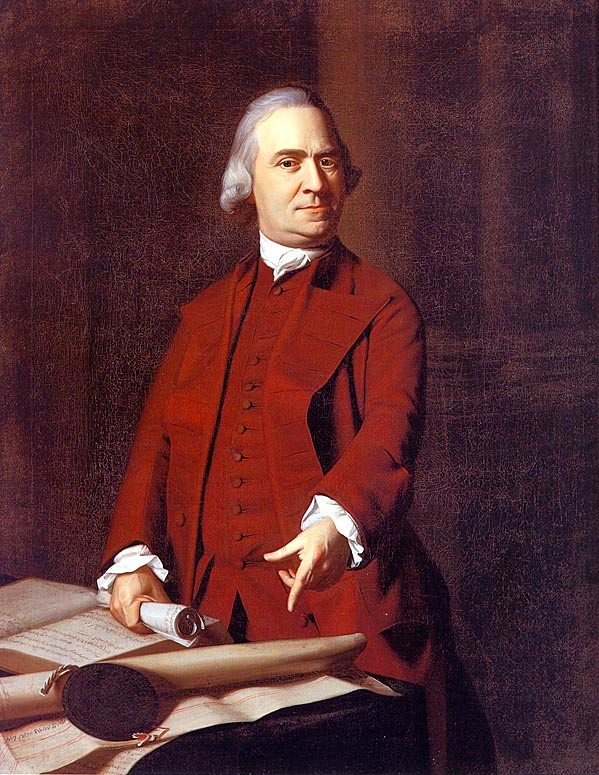
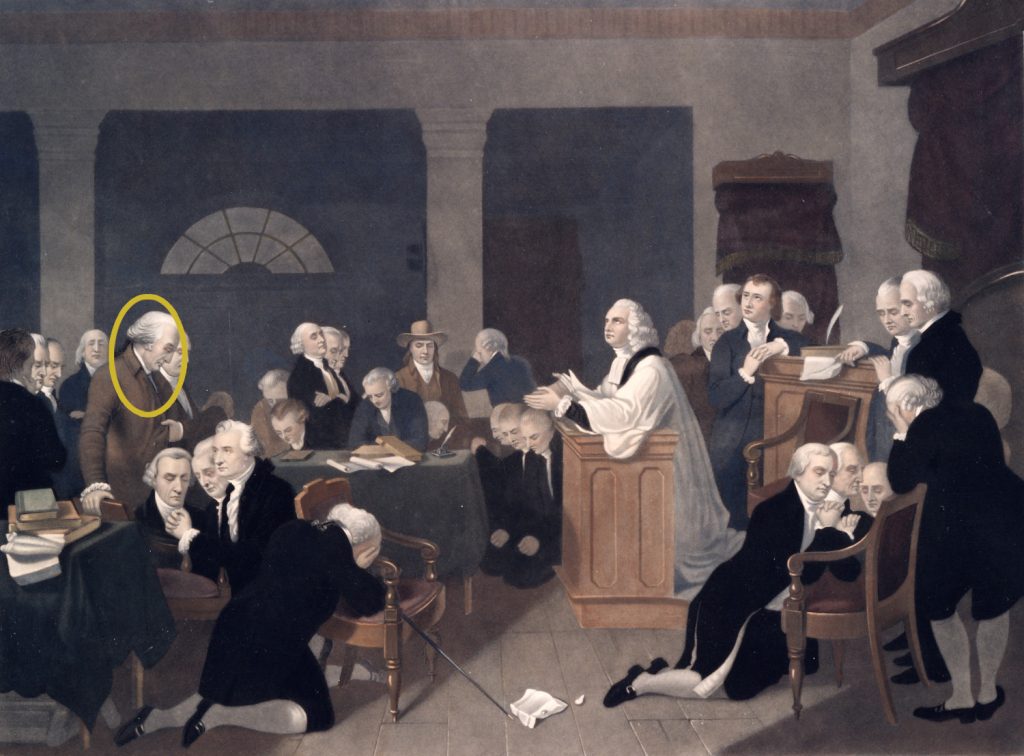
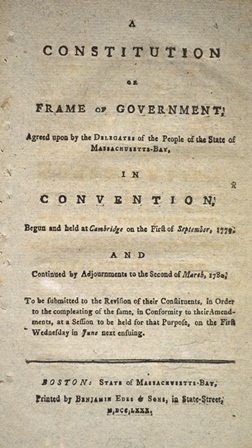
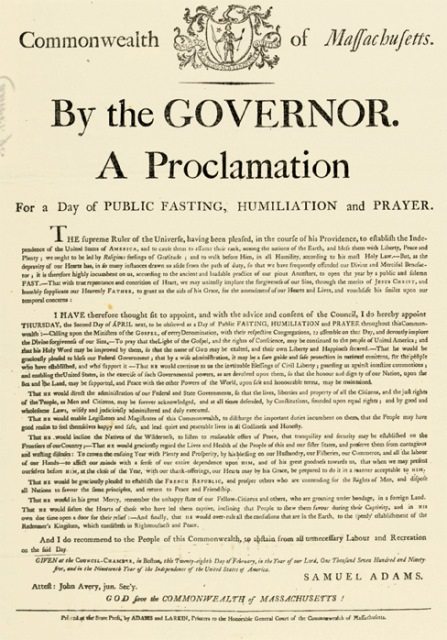
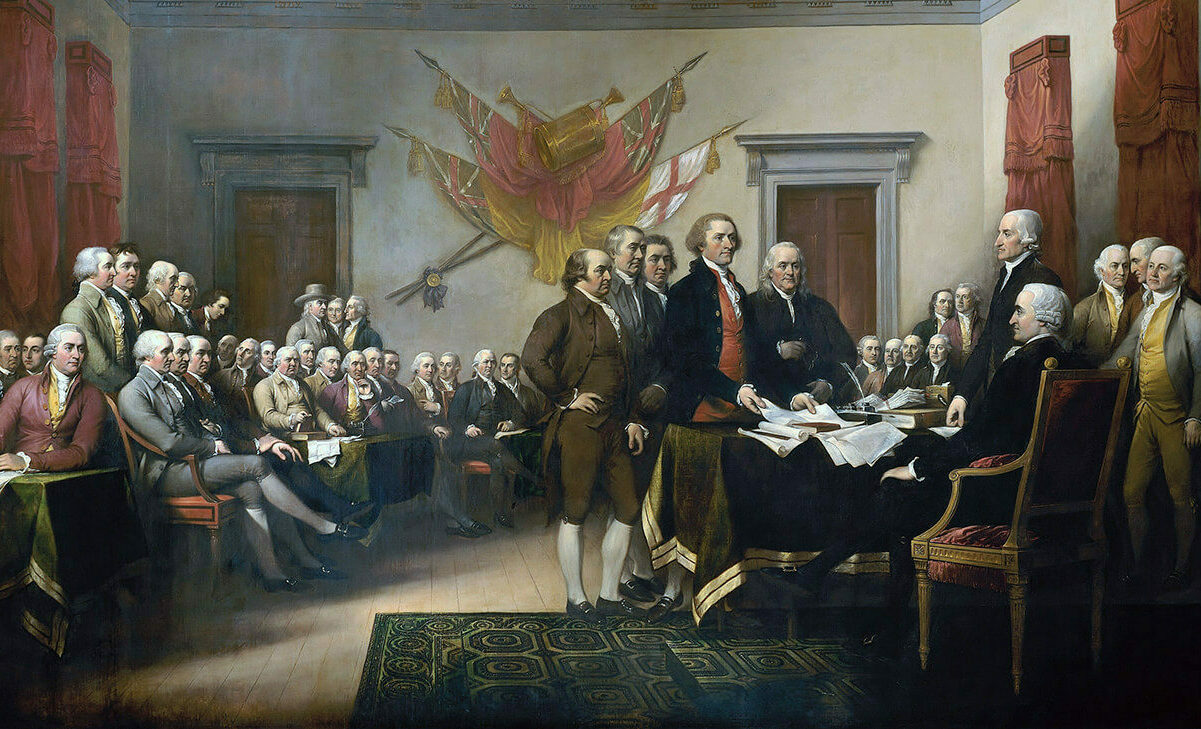
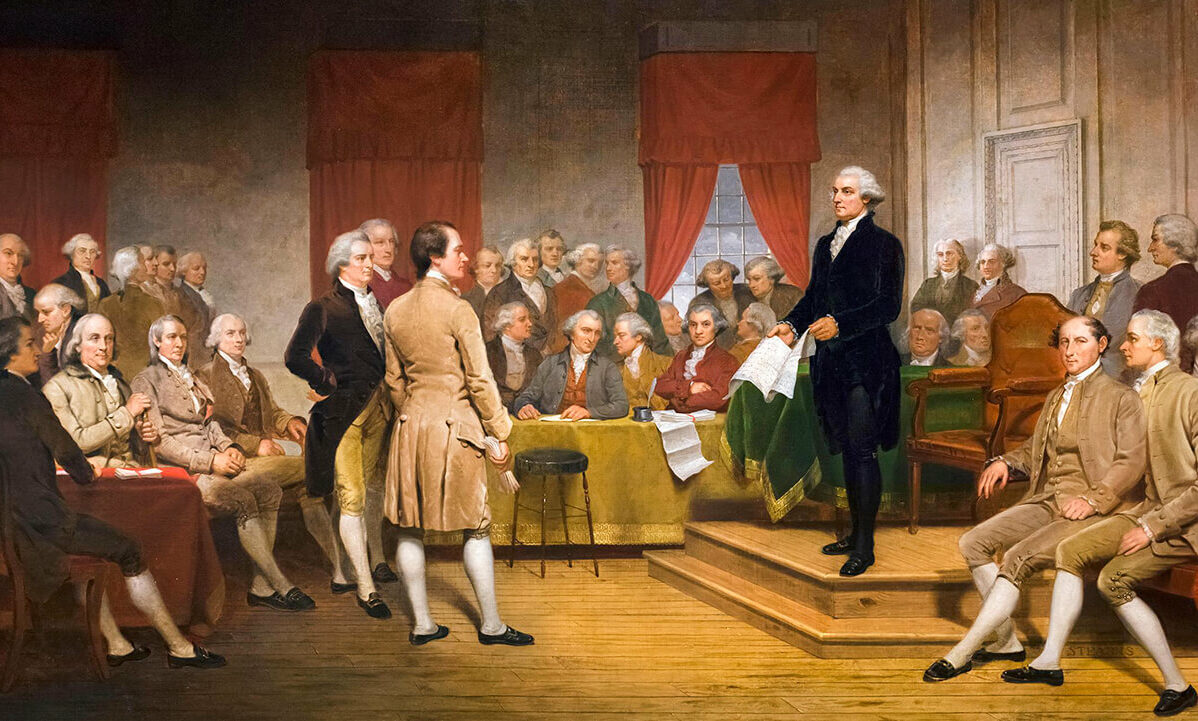
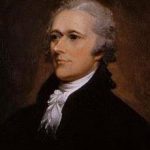 A Founding Father who exerted great influence in our constitutional government was Alexander Hamilton. As a delegate to the Constitutional Convention of 1787, and one of its thirty-nine signers, he played what would be considered a minor role in the debates of the Convention itself. However he (along with John Jay and James Madison) became one of the three men most responsible for the adoption and ratification of the Constitution through the writing and publication of a series of articles which became known as The Federalist Papers.
A Founding Father who exerted great influence in our constitutional government was Alexander Hamilton. As a delegate to the Constitutional Convention of 1787, and one of its thirty-nine signers, he played what would be considered a minor role in the debates of the Convention itself. However he (along with John Jay and James Madison) became one of the three men most responsible for the adoption and ratification of the Constitution through the writing and publication of a series of articles which became known as The Federalist Papers.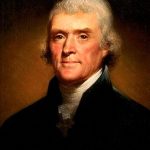 (By the way, during that election cycle in 1800, a number of ministers preached and published pulpit sermons against Jefferson, including Hamilton’s good friend, the Rev. John Mitchell Mason.)
(By the way, during that election cycle in 1800, a number of ministers preached and published pulpit sermons against Jefferson, including Hamilton’s good friend, the Rev. John Mitchell Mason.)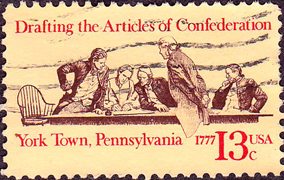 America’s first attempt at a national governing document was in 1777 with the Articles of Confederation.
America’s first attempt at a national governing document was in 1777 with the Articles of Confederation. James Madison agreed:
James Madison agreed: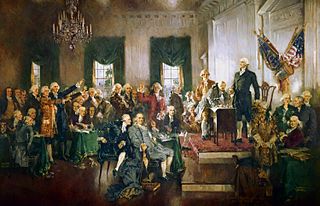 Many delegates involved with writing the Constitution were trained in theology or ministry,
Many delegates involved with writing the Constitution were trained in theology or ministry,